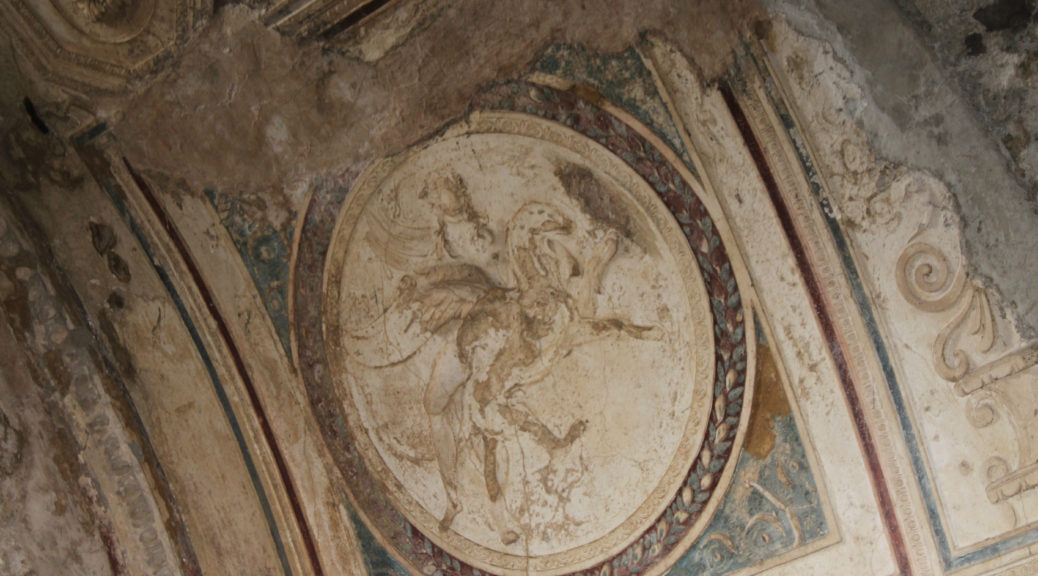
Pompeii
As we walked among the ruins of Pompeii, our local guide shared what life in Pompeii would have been like as well as that fateful day when Mt. Vesuvius erupted in 79 AD. The ruins remained undisturbed for over one thousand years. One of the first areas we saw was the forum, a large plaza where people would have gathered to socialize, do business and worship. Immediately below is the Temple of Jupiter with Mt. Vesuvius in the background. The picture with the writing would have marked a public building in the forum. There was also a weighing table. It was made of marble and had openings of different sizes. This would have been used to measure the amount of goods an individual was purchasing.
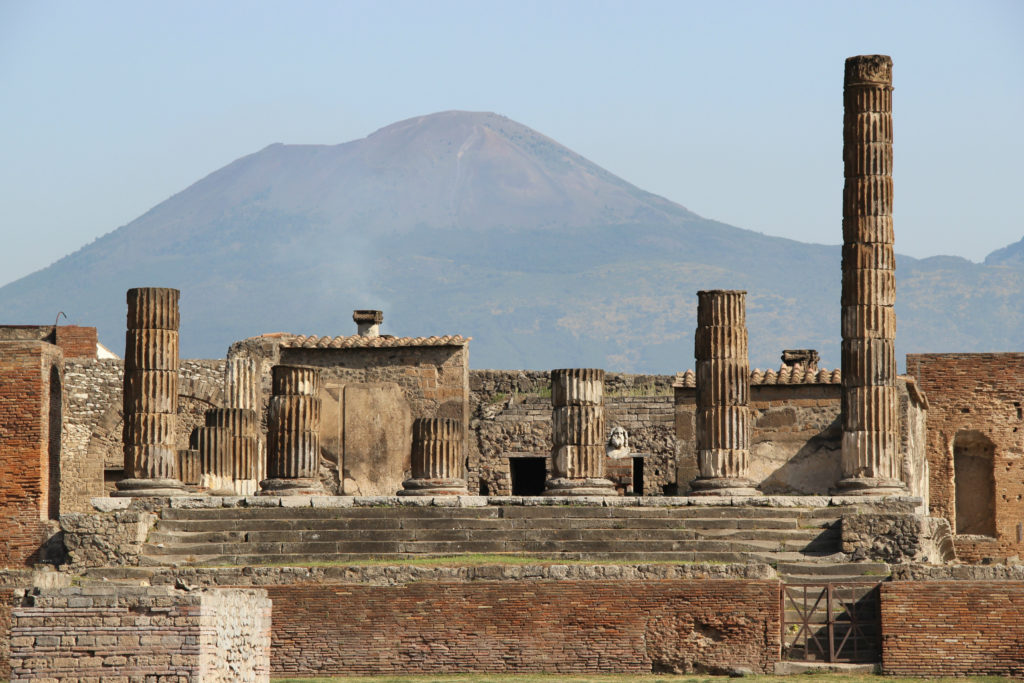


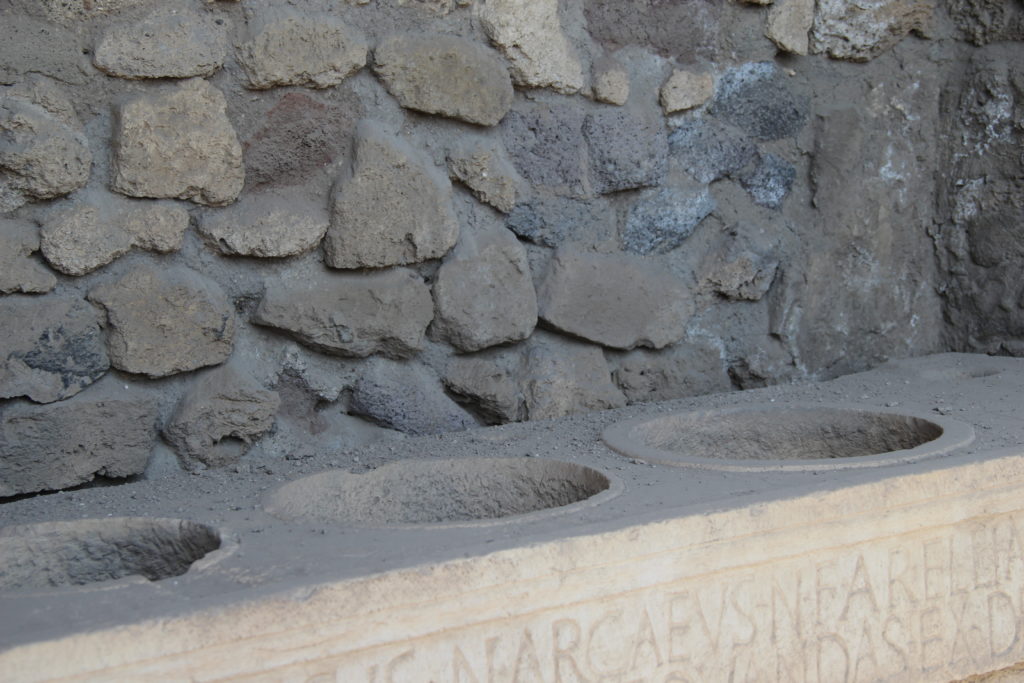
This was a typical street in Pompeii. As evidence of the practicality of the people in those times, there were stepping stones in the street to keep people’s feet out of rain water and animal waste that would have been in the streets. A public fountain is also pictured. While wealthy residents would have water available in their homes, the “common people” would have gotten their water from these public fountains. They were located at street corners. The different faces on the fountains may have served as a way of giving directions. The last picture is of watch tower that was along one of the boundary walls in Pompeii.
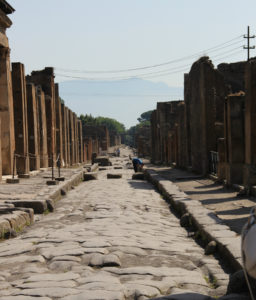
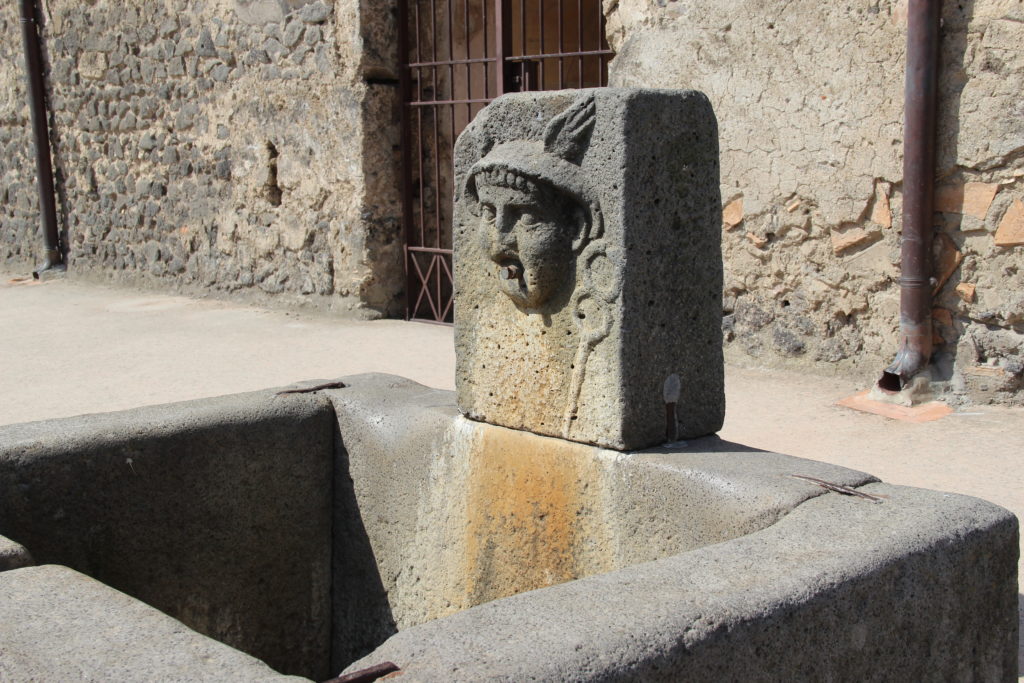

We also saw the public baths. There appeared to be “cubbies” that our guide told us could have been a place to keep one’s personal belongings while bathing. A typical routine might be to exercise and then go the tepidarium or warm bath. The person would next go to the calidarium or hot bath (second and third picture). This would be similar to a modern day sauna. They would then return to the tepidarium and finally go to the frigidarium for a “cool down.” The baths also have surviving frescos, one of which is shown in the last picture.
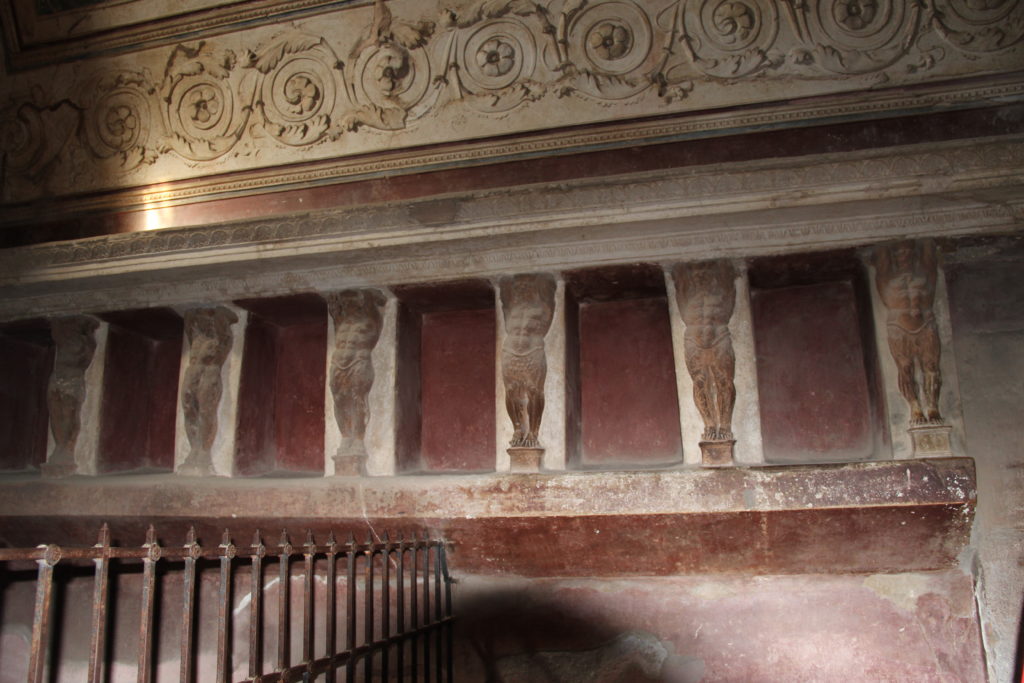
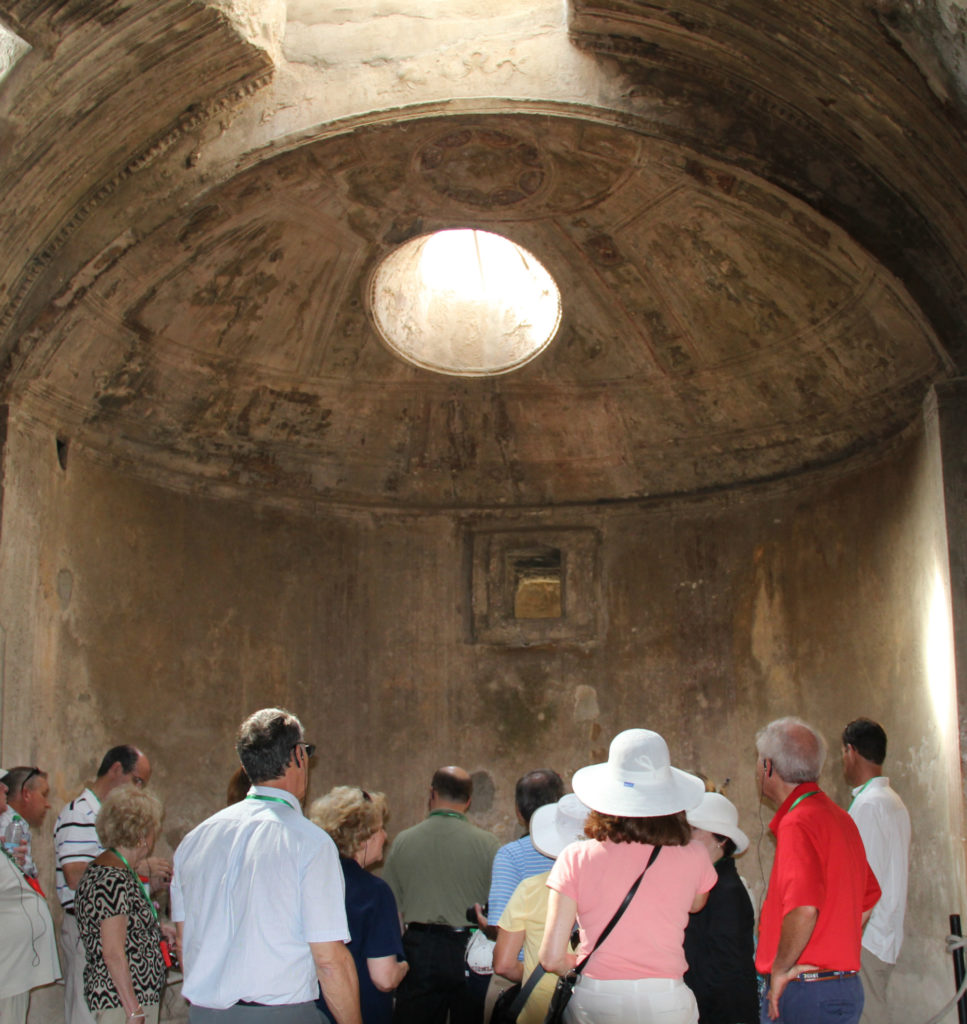
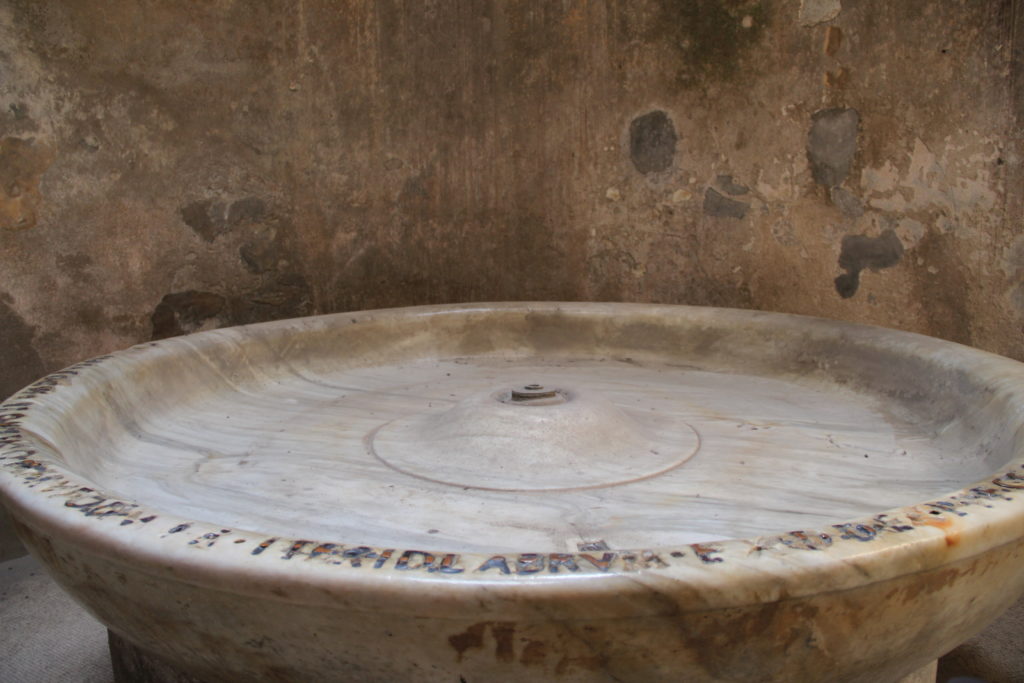
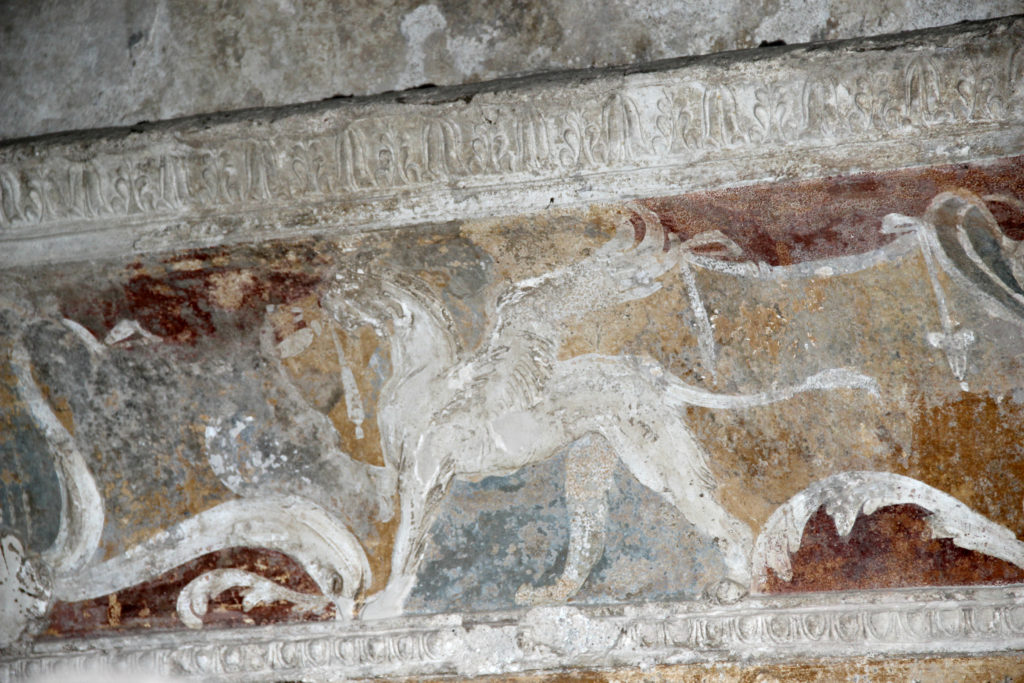
The picture below is a thermopolium, a place where people could purchase hot food that was ready to eat. The holes were probably where containers would have held food or drink. The next pictures are of the bakery. Millstones (second picture) were used to grind grain. The oven for baking the bread is pictured in the next picture. Our guide told us that 81 loaves of “carbonized” bread were found suggesting that the day of the volcanic eruption started as a very normal day.


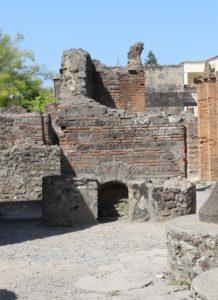
The next set of pictures is of “The House of Faun.” It is estimated to have been built in the 2nd Century BC. It is one of the largest residences in Pompeii. The house’s first room is a vestibule with a marble floor made up of tiles. The next room is the main atrium. It contains an “impluvium,” which is a sunken area designed to catch rainwater. In the middle of the impluvium is a replica of a statue of Faun. The original has been moved to a museum in Naples. The third picture is the kitchen area. Finally, a peristyle was located in the back of the home. A peristyle is a row of columns, often surrounding a courtyard. This particular one has 28 columns and suggests the owner of the home was very wealthy. The last picture is the home of a more common person. The residents of this house would have accessed water from one of the fountains on the streets. The holes near the top held supports for a second story. The residents would have lived on the second floor and most likely would have had a business on the first floor.
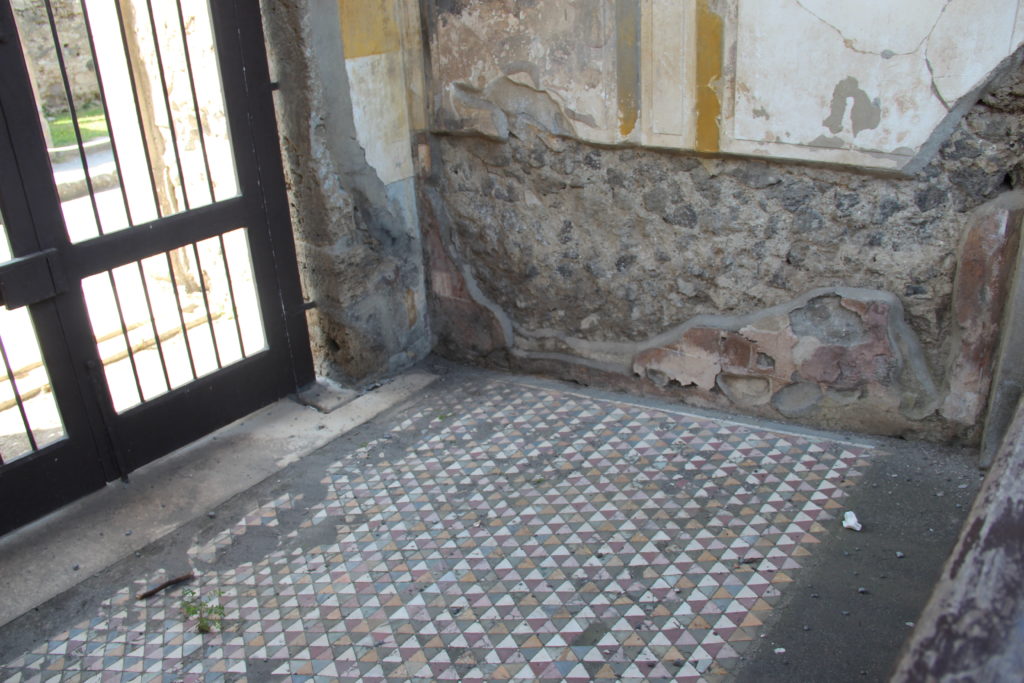

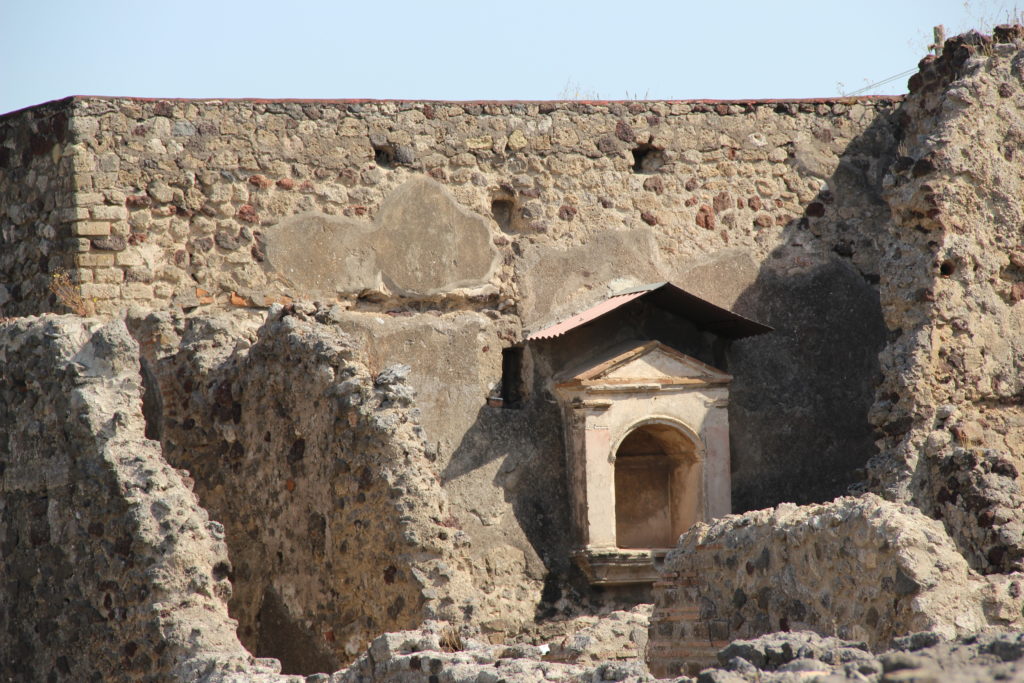
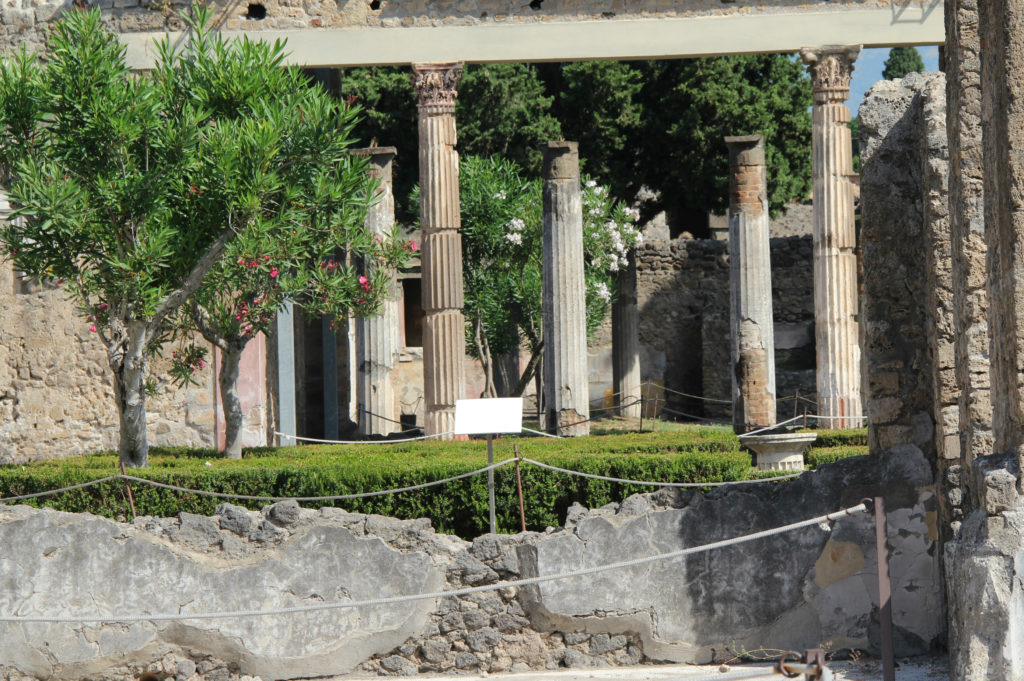
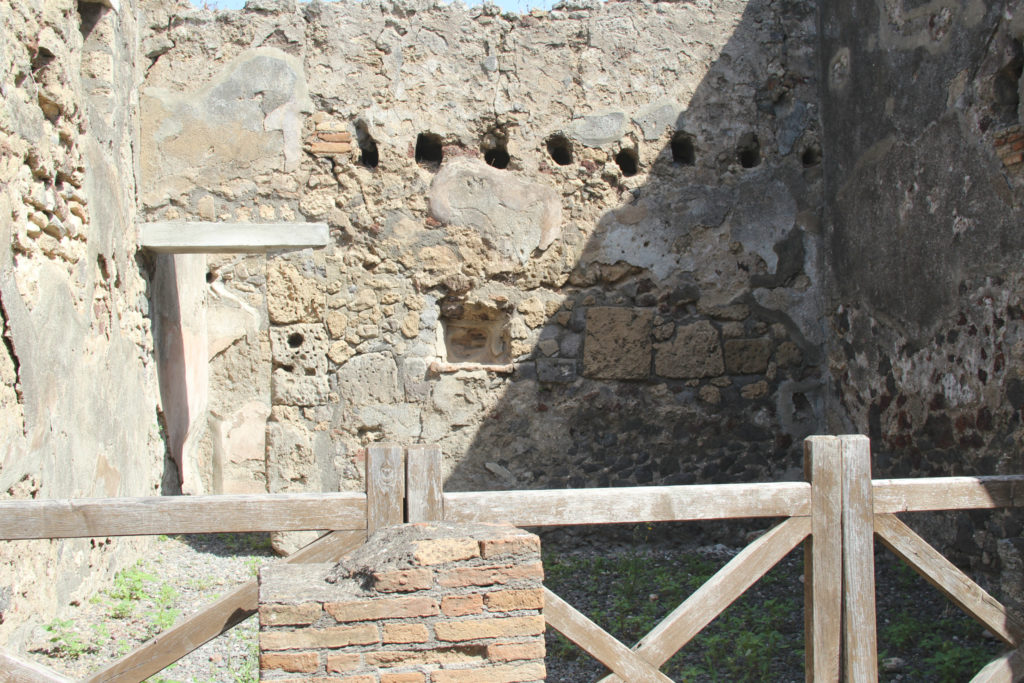
One of the last structures we saw during our visit was the Basilica. It is estimated to have been built between 120 and 78 BC. The Basilica was not a church in those days but rather a place where people would assemble. Business and legal issues were likely discussed. There were also some displays as we were leaving the site, including casts of some of the people who died. At the time of the eruption, many people suffocated from volcanic gases. The person pictured appears to be attempting to cover his mouth and nose. Their bodies were covered in ash and eventually decayed inside the harden lava, which left air space. During excavation, these air spaces were filled with plaster showing the last moments of those who died. In an effort to finish this post on a bit more positive note, I have also included a picture of plants and bushes around the site. These would have been common at the time Mt. Vesuvius erupted.

